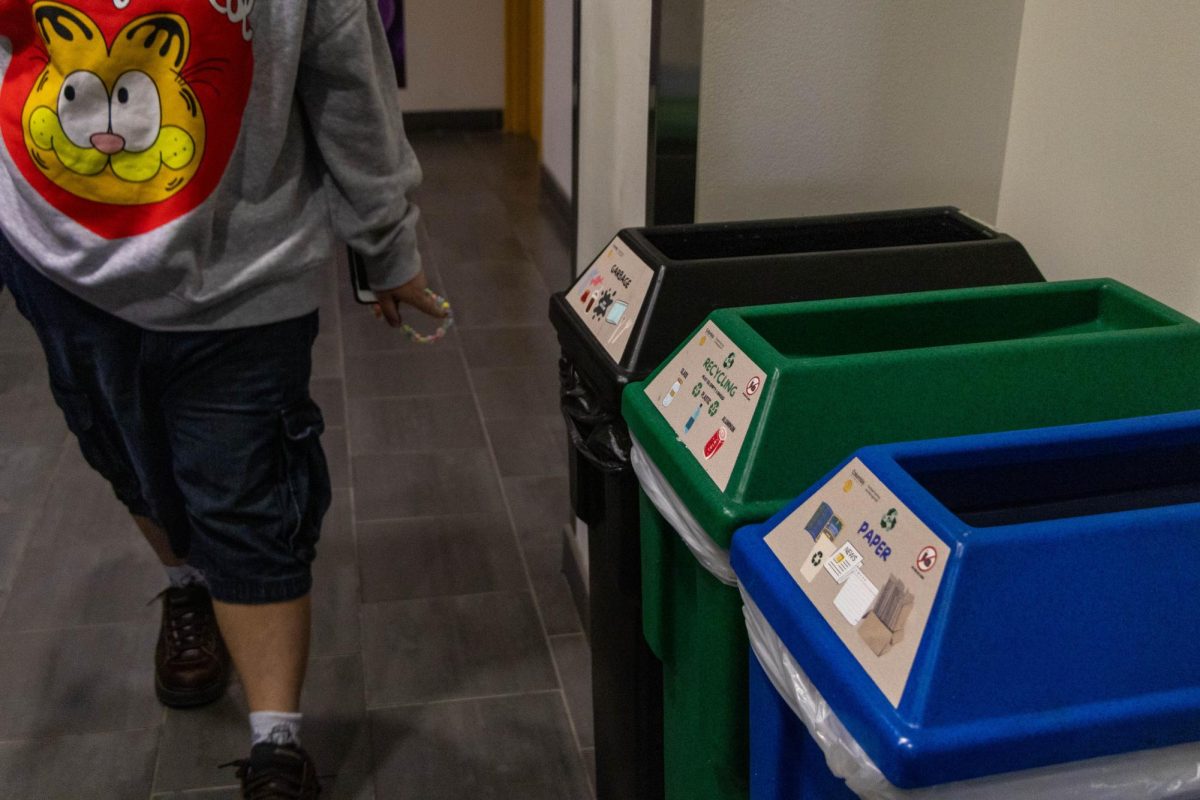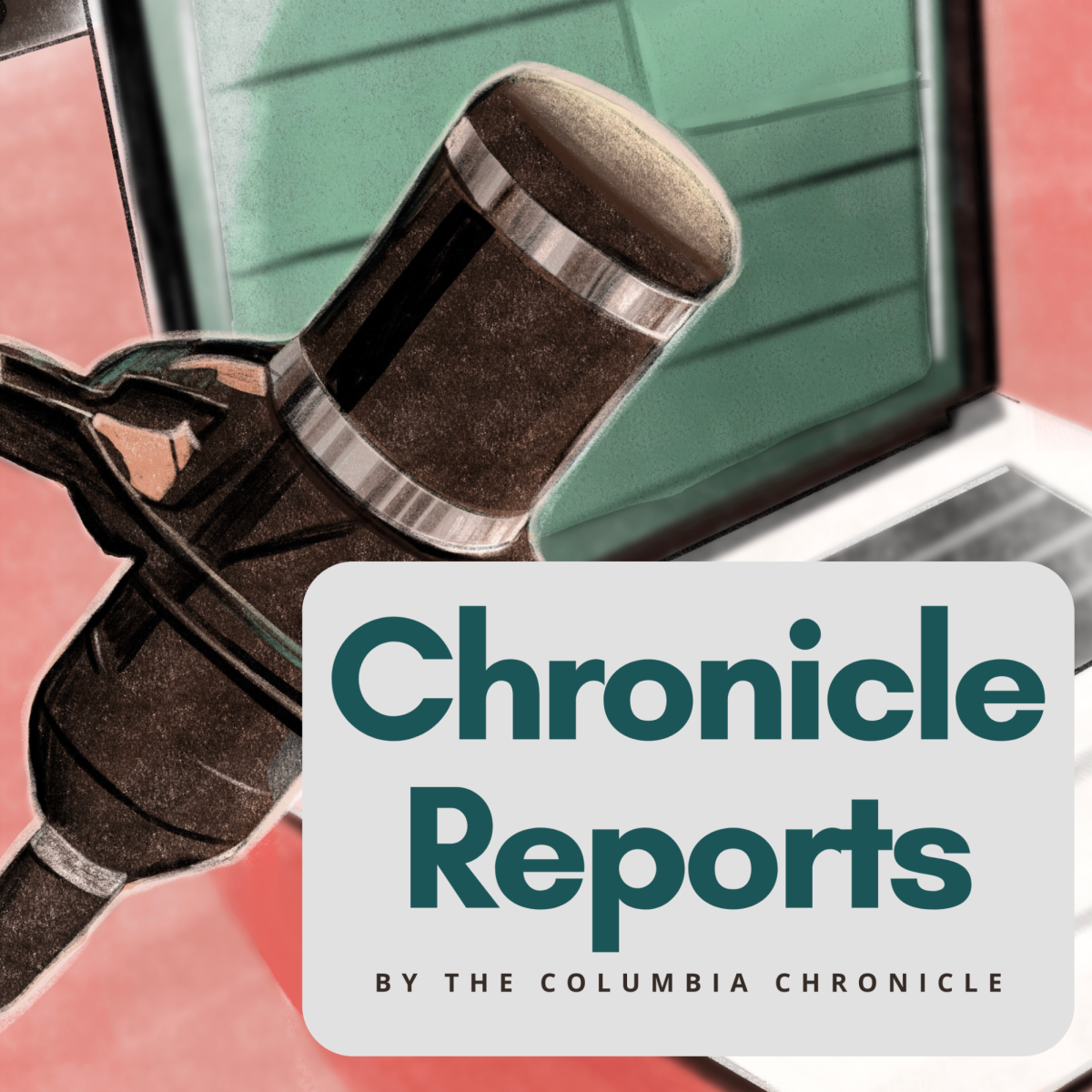Last year, there was nearly one million pounds of waste from Columbia, with just under half of it diverted to recycling, resulting in a 45% diversion rate. The goal is to be at 50% by 2030, said Ann Kalayil, associate vice president of Facilities Planning and Management.
The recycling program has not been impacted by budgets cut at the college, Kalayil told the Chronicle in an email.
“I think for us in facilities, we understand how important sustainability is for not only our campus, in terms of who we are as responsible citizens, but we also know how important it is for students.”
Across campus there are green recycling bins with labels of acceptable recycling items. In addition to the paper and plastic recycling bins, there are also bins for batteries labeled “energy recycling.”
At Columbia, the battery bins accept single-use batteries and rechargeable batteries in the lobbies of each building.
Kalayil said that the school has a green buildings program, which is part of Columbia’s conservation efforts and focuses on “energy, water, waste, technology and community,” with the overall goal of Columbia being carbon neutral for building emissions by 2050.
Earlier in the year, Kalayil worked with the Student Government Association to help create new signs for the various bins.
Jenna Davis, president of SGA, said the signage helps encourage students to think before throwing something out to ensure items are properly disposed of.
“I believe recycling across campus is extremely important, especially in creative fields. As artists we create a lot of waste but being mindful of materials that can be reused or properly disposed of is essential to doing our part in helping the environment,” Davis said.
Aaliyih Panesso, a junior fashion studies major, was encouraged to recycle by one of her past teachers, James Ciccotti, a part-time instructor in the School of Fashion. According to Panesso, Ciccotti made sure the class was aware of what could be recycled and which bins to put certain items in.
“A lot of programs here are very adamant about sustainability, even the fashion program really strikes that down because it has so much to do with our economy and the way our clothes are made,” Panesso said.
As for future goals for a green buildings program, Kalayil is hopeful that their continued efforts will be able to have a positive impact.
“We really have a great partnership and we want to expand that partnership as much as possible, so that we can actually move the needle towards recycling energy, decreasing our energy use, reducing our water consumption, and just in general reducing our carbon footprint,” Kalayil said.
Brielle Black, a junior fashion major with a sustainability minor, said that recycling and reusing is important and also cheaper from a fashion standpoint. Black is also the Sustainable Design Chapter president of the Columbia College Fashion Association.
“Sustainability, it’s life,” Black said. “It’s to have what we have and then better it, which everyone should do.”
The new environmental and sustainability studies major was included on a list of recommended undergraduate programs to be potentially cut in order to save the college money, which was released at a faculty meeting on Sept. 11.
Despite these efforts, Black also feels like the school has been wasteful with leftover materials, noting that the sewing lab discards garments that could have been reused, which is an initiative Black is willing to work on in the CCFA.
“Sustainability is so much more than just recycling and reusing what we have,” Black said.
Copy edited by Trinity Balboa
Resumen en Español:
El año pasado, Columbia recogió casi 1 millón de libras de basura y recicló casi la mitad. A pesar de estos esfuerzos y participación en un programa para reducir el uso de energía, varios estudiantes opinan que se podría hacer más. Múltiples programas enfatizan la importancia de la sostenibilidad como la Escuela De Moda, donde enseñan la magnitud del efecto económico y como la ropa es hecha. La universidad busca aumentar la cantidad de basura reciclada en un 50% en 2030.
Resumen en Español por Uriel Reyes
Resumen en Español copia editada por Manuel Nocera
















